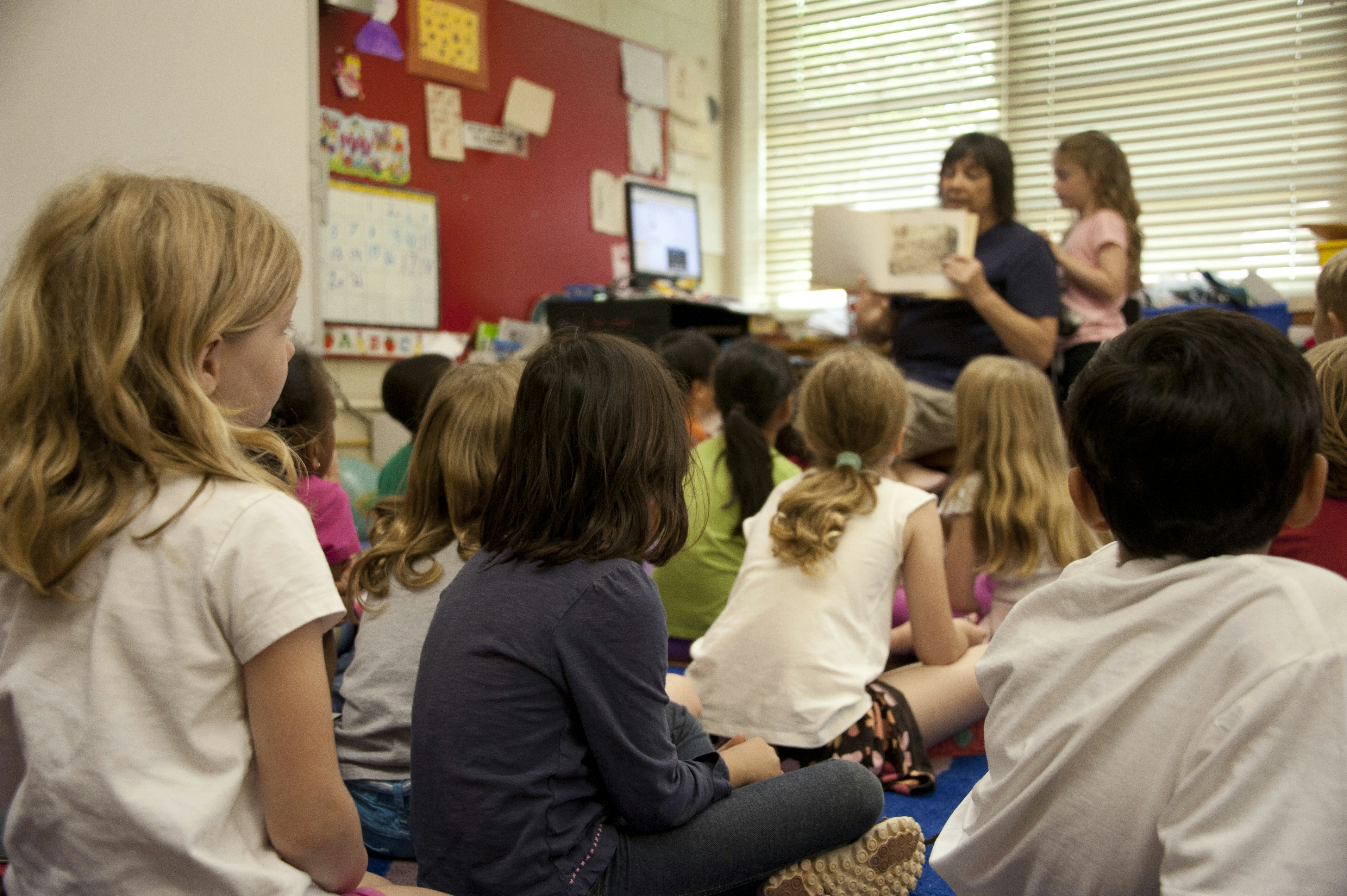Support our educational content for free when you buy through links on our site. Learn more
10 Successful Approaches to Student Engagement That Actually Work 🚀 (2025)
Imagine walking into a classroom where every student is leaning in, eyes sparkling with curiosity, hands shooting up with questions, and collaboration buzzing like a beehive. Sounds like a dream, right? Yet, this vibrant scene is exactly what successful student engagement looks like—and it’s more achievable than you might think.
At Teacher Strategies™, we’ve distilled years of classroom experience, research insights, and real-world trials into 10 proven approaches that ignite and sustain student engagement. From sparking curiosity with compelling hooks to leveraging tech tools like Kahoot! and Pear Deck, and from fostering meaningful relationships to empowering student voice and choice, this guide covers it all. Plus, we’ll share common pitfalls to avoid and how to measure if your efforts are truly making a difference.
Curious about how a simple conversation about a band t-shirt turned a disengaged student into a motivated learner? Or how gamification transformed a dull review into a classroom party? Keep reading—we’ve got stories, strategies, and resources that will transform your teaching and your students’ learning experience.
Key Takeaways
- Curiosity and relevance are the spark plugs of engagement—start lessons with intriguing questions and connect content to students’ lives.
- Strong teacher-student relationships and peer collaboration build trust and motivation.
- Empowering student voice and choice boosts ownership and intrinsic motivation.
- Gamification and purposeful technology integration turn learning into an adventure.
- Differentiated instruction meets diverse learner needs without overwhelming teachers.
- Meaningful, timely feedback guides growth and deepens engagement.
- Social-emotional learning and a positive classroom culture are foundational.
- Measuring engagement requires both qualitative observation and quantitative data.
👉 Shop Top Engagement Tools:
- Kahoot!: Amazon | Official Site
- Pear Deck: Official Site
- Classcraft: Amazon | Official Site
- Interactive Whiteboards: SMART Board on Amazon | Promethean Board
Table of Contents
- ⚡️ Quick Tips and Facts: Your Engagement Cheat Sheet
- 📚 The Evolution of Engagement: A Journey Through Student Motivation
- 🤔 Why Student Engagement Matters: Beyond Just “Showing Up”
- 🚀 Our Top 10 Game-Changing Approaches to Skyrocket Student Engagement
- Ignite Curiosity: The Power of Intrigue & Relevance
- Foster Connection: Building Bridges, Not Walls
- Empower Voice & Choice: Letting Students Steer the Ship
- Gamify Learning: Turning Lessons into Adventures
- Embrace Technology Wisely: Tools, Not Toys
- Differentiate for Diversity: One Size Fits None
- Provide Meaningful Feedback: The Compass for Growth
- Integrate Social-Emotional Learning (SEL): Hearts & Minds Connected
- Project-Based & Experiential Learning: Learning by Doing
- Cultivate a Positive Learning Environment: The Vibe Check
- 🚧 Common Pitfalls & How to Avoid Them: Engagement Roadblocks
- 💡 Beyond the Classroom: Engaging Parents & Community
- 📊 Measuring Engagement: Are We Really Making a Difference?
- Meet the Engagement Architects: Your Teacher Strategies™ Experts
- Unlocking Potential: A Glimpse into Our Engagement Blueprint
- ✨ Conclusion: The Art & Science of Lasting Engagement
- 🔗 Recommended Links: Your Next Steps to Engagement Mastery
- ❓ FAQ: Your Burning Questions About Student Engagement Answered
- 📚 Reference Links: The Research Behind Our Recommendations
Here is the main body of the article, written according to your detailed instructions.
⚡️ Quick Tips and Facts: Your Engagement Cheat Sheet
Pressed for time? We get it. Here at Teacher Strategies™, we know your planning period is sacred. Here’s the cheat sheet for boosting student engagement right now.
| Quick Fact & Tip –
| The “5-Minute Rule” ⏰ –
| Start with a “hook” to grab attention in the first 5 minutes of class. A surprising fact, a quick poll, or a provocative question works wonders. –
| Connection > Content 🤝 –
| Students who feel a sense of belonging are more engaged. Greet them by name at the door. Ask about their weekend. It takes seconds but builds a foundation of trust. –
| Gamify It! 🎮 –
| Use tools like Kahoot! or Blooket for quick, competitive reviews. The energy shift is immediate and powerful. –
| Choice is a Superpower 🦸♀️ –
| Offer students a choice, even a small one. “Would you rather write a paragraph or draw a comic strip to show what you know?” This simple act boosts ownership and engagement. –
| Tech with a Purpose 💻 –
| Use tools like Pear Deck or Nearpod to make presentations interactive. Don’t just present; create a dialogue. –
📚 The Evolution of Engagement: A Journey Through Student Motivation
Remember the “sage on the stage” model? The teacher at the front, dispensing wisdom to rows of silent, (supposedly) absorbent students? Yeah, we remember it too. For decades, “engagement” often just meant “compliance.” Were students quiet? Were they looking forward? Check, check. Engaged.
But we know better now.
The conversation has shifted dramatically from passive reception to active participation. The modern understanding of student engagement isn’t about silent obedience; it’s about cognitive, emotional, and behavioral investment in learning. As FIU Insider notes, it encompasses “students’ involvement, interest, motivation, participation, emotional reactions, and investment in learning.” This isn’t just a new fad; it’s a fundamental change in our understanding of how brains learn, driven by research in neuroscience and psychology. We’ve moved from asking “Are they listening?” to “Are they thinking? Are they connecting? Are they creating?”
This evolution recognizes that students aren’t empty vessels. They are active agents in their own education. Our job has transformed from being the sole source of information to being the architect of engaging experiences.
🤔 Why Student Engagement Matters: Beyond Just “Showing Up”
Let’s be real: an unengaged classroom is draining. It feels like you’re performing a one-person show to an empty theater. But the stakes are much higher than just our energy levels. Student engagement is the secret sauce, the foundational element that makes everything else in education work.
The Ripple Effect: Academic Success & Beyond
When students are engaged, the benefits create a powerful ripple effect across their entire educational journey. It’s not just about better grades (though that’s a big part of it!).
- Higher Academic Achievement: This one’s a no-brainer. Engaged students are actively processing information, asking questions, and making connections. A 2019 Gallup report found that students who are engaged with school are more hopeful for the future and have higher academic performance.
- Increased Retention: This is huge, especially for higher education. The team at Element451 correctly points out that a holistic approach that promotes engagement is key to retention. When students feel connected and involved, they are far more likely to persist through challenges and stay in school.
- Improved Well-being: Engagement is deeply linked to social-emotional learning. A classroom where students feel safe, valued, and heard is a classroom where they can thrive emotionally, not just academically.
- Development of 21st-Century Skills: Active learning strategies—collaboration, problem-solving, critical thinking—are the bedrock of engagement. These are precisely the skills students need to succeed in the modern world.
Spotting the Signs: Is Your Classroom Buzzing or Snoozing?
So, how do you take the temperature of your classroom’s engagement level? It’s more than just looking for raised hands. We’ve learned to look for a spectrum of clues.
| ✅ Signs of an Engaged Classroom – | ❌ Signs of a Disengaged Classroom –
| Students asking questions (even challenging ones!) – | Silence, crickets… 🦗 or off-topic chatter –
| A “productive buzz” during group work – | Heads on desks, staring out the window –
| Students referencing previous lessons or connecting ideas – | Minimal effort on assignments; “just enough to pass” –
| Voluntary participation in discussions – | Frequent absences or tardiness –
l-
| Students smiling, laughing, and showing positive emotions – | A palpable sense of boredom or frustration in the room –
🚀 Our Top 10 Game-Changing Approaches to Skyrocket Student Engagement
Alright, let’s get to the good stuff. Over years of in-the-trenches experience, late-night lesson planning, and countless “aha!” moments, our team at Teacher Strategies™ has honed a list of the most impactful approaches to student engagement. These aren’t just theories; they are battle-tested strategies that work. We’ve compiled our top ten here, and they are a great starting point for exploring what are examples of effective teaching strategies?.
1. Ignite Curiosity: The Power of Intrigue & Relevance
Before you can teach them anything, you have to get their attention. Curiosity is the spark that lights the fire of learning.
- Start with a “Why”: Never begin a lesson with “Today, we’re learning about…” Instead, start with a question, a mystery, or a real-world problem. For a history lesson on the Silk Road, don’t list dates. Ask, “How did a secret kept by Chinese empresses for 2,000 years change the world forever?”
- Make it Relevant: Connect the content to their lives. Learning about percentages? Frame it as calculating a discount on a new pair of Nike sneakers or understanding statistics for their favorite video game character. As FIU Insider puts it, “Creating interesting content and encouraging active learning are crucial for keeping students engaged.” This is a cornerstone of our favorite Instructional Strategies.
2. Foster Connection: Building Bridges, Not Walls
Students don’t learn from teachers they don’t like or trust. It’s that simple. Building strong relationships is non-negotiable.
The Magic of Teacher-Student Relationships
One of our veteran teachers, Sarah, tells a story about a student who was completely checked out. He’d never do his work. One day, she noticed he was wearing a band t-shirt. She spent two minutes talking to him about their music. The next day, he turned in his first assignment all year. It wasn’t magic; it was a connection. He felt seen. As Element451’s research suggests, “Personalizing the student experience… [makes] students feel seen, supported, and valued.”
Peer Power: Collaborative Learning Unleashed
Don’t forget the power of peer-to-peer connections! Well-structured group work can be a goldmine for engagement. Think “Think-Pair-Share,” jigsaw activities, or group projects. And it’s not just for K-12. A study from West Chester University highlighted a fascinating approach, noting, “We discovered remote learning enabled our ability to maximize a previously underutilized resource in attaining student success, our alumni.” Imagine pairing current students with alumni for mentorship or projects—a powerful, real-world connection!
3. Empower Voice & Choice: Letting Students Steer the Ship
When students have a say in their learning, their investment skyrockets. This doesn’t mean letting them run wild! It means providing structured choices.
- Topic Choice: For a research paper, provide a theme but let them choose a specific topic within it.
- Product Choice: Let them demonstrate learning in different ways. A podcast, a video, an infographic, or a traditional essay.
- Process Choice: Allow them to choose to work alone, with a partner, or in a small group.
This sense of autonomy is a powerful intrinsic motivator.
4. Gamify Learning: Turning Lessons into Adventures
Gamification uses game mechanics—points, badges, leaderboards, competition—and applies them to learning. It taps into our natural desire for achievement and fun.
Real-World Examples: Kahoot!, ClassDojo, & More!
- Kahoot!: The king of classroom quiz games. The upbeat music and real-time leaderboard create an electric atmosphere for review sessions.
- Blooket: A newer favorite of ours that offers multiple game modes for the same set of questions, keeping things fresh.
- Classcraft: Turns your entire class into a role-playing game where students level up, earn powers, and work in teams. It’s a masterclass in long-term engagement.
- ClassDojo: Excellent for younger students, focusing on positive reinforcement and parent communication.
👉 Shop Top-Rated Educational Games & Tools:
5. Embrace Technology Wisely: Tools, Not Toys
Technology can be a massive engagement booster… or a massive distraction. The key is purposeful integration.
Interactive Whiteboards & Digital Platforms
Tools like SMART Boards or Promethean Boards can turn a lecture into an interactive experience. Digital platforms like Google Classroom streamline workflow, while add-ons like Pear Deck and Nearpod embed formative assessments and interactive questions directly into your slides. No more passive note-taking!
AI in Education: Friend or Foe for Engagement?
The elephant in the room: AI. Is it a cheating machine or an engagement tool? We say: it’s all in how you use it. Instead of banning it, teach students to use tools like ChatGPT or Google Bard as a brainstorming partner, a debate opponent, or a tool to simplify complex texts. Frame it as a collaborator, not a shortcut.
6. Differentiate for Diversity: One Size Fits None
Every student walks into your classroom with a different background, skill level, and learning style. A one-size-fits-all approach guarantees that some students will be bored while others are overwhelmed. This is where Differentiated Instruction becomes your best friend.
Meeting Every Learner Where They Are
Differentiation isn’t about creating 30 different lesson plans. It’s about being flexible in your content, process, and product.
- Tiered Assignments: The whole class works on the same core skill, but the complexity of the task varies.
- Learning Stations: Set up different stations around the room, each with a different activity. Students can rotate through them, allowing for movement and variety.
- Flexible Grouping: Sometimes students work in homogenous skill groups; other times, mix them up for peer tutoring.
Effective Lesson Planning is key to making differentiation manageable.
7. Provide Meaningful Feedback: The Compass for Growth
Feedback is more than a grade. It’s a conversation. Vague comments like “Good job!” are nice, but they don’t help students grow.
Effective feedback is:
- Timely: As close to the learning event as possible.
- Specific: “I noticed you used a strong topic sentence here, which made your argument clear,” is much better than “Good paragraph.”
- Actionable: It should tell the student what to do next. “Next time, try adding a specific piece of evidence from the text to support this claim.”
This kind of feedback shows students you’re paying attention and are invested in their success. It’s a core tenet of effective Instructional Coaching.
8. Integrate Social-Emotional Learning (SEL): Hearts & Minds Connected
A stressed, anxious, or emotionally dysregulated student cannot learn effectively. Period. Integrating SEL isn’t “one more thing to do”; it’s the thing that makes everything else possible.
This can be as simple as:
- Daily Check-ins: A quick “fist-to-five” on how everyone is feeling.
- Teaching Self-Regulation: Breathing exercises or a designated “calm-down corner.”
- Building Empathy: Through literature, group discussions, and collaborative tasks.
As Element451’s analysis points out, “Proactive mental health support is vital for academic and personal success.”
9. Project-Based & Experiential Learning: Learning by Doing
Want to answer the dreaded question, “When are we ever going to use this?” Let them use it! Project-Based Learning (PBL) and experiential learning move beyond theory and into application.
The FIU article provides excellent examples, such as a business course where students analyze a real company’s financials or an engineering class where they design a bridge using software. These aren’t just activities; they are immersive experiences that build deep, lasting understanding.
10. Cultivate a Positive Learning Environment: The Vibe Check
Finally, all these strategies must exist within a positive, safe, and respectful classroom culture. This is the foundation. It’s about the “vibe” of the room. Is it a place where students feel safe to take risks and make mistakes?
This is where strong Classroom Management comes in. But it’s more than rules and consequences. It’s about co-creating norms with your students, celebrating effort over just achievement, and modeling the respect and enthusiasm you want to see.
🚧 Common Pitfalls & How to Avoid Them: Engagement Roadblocks
Even with the best intentions, it’s easy to stumble. Here are a few common traps we’ve seen (and fallen into ourselves!) over the years.
❌ The “One-Size-Fits-All” Trap
The Pitfall: Using the same engagement strategy every single day. That super-fun Kahoot! game? It gets old if you do it every Friday.
The Fix: Variety is the spice of life—and the classroom! Mix it up. Use a combination of tech-based activities, quiet reflection, group work, and individual practice. Keep them on their toes!
❌ Over-Reliance on Rewards
The Pitfall: Relying too heavily on extrinsic motivators like candy, pizza parties, or prize boxes. While these can be fun occasionally, they can kill intrinsic motivation. Students start working for the prize, not for the love of learning.
The Fix: Focus on intrinsic rewards. The satisfaction of solving a hard problem, the pride of creating something amazing, the joy of learning something new. Praise effort, not just outcomes.
❌ Ignoring Student Well-being
The Pitfall: Pushing for academic rigor without acknowledging that students are whole people with lives and emotions outside your classroom walls.
The Fix: Prioritize connection and flexibility. As the Element451 summary emphasizes, mental health and a sense of belonging are crucial. A little empathy goes a long way. If you notice a student is having an off day, a quiet, “Hey, is everything okay?” can mean more than any lesson plan.
💡 Beyond the Classroom: Engaging Parents & Community
Engagement doesn’t stop at the classroom door. When you create a triangle of support between the teacher, the student, and the home, you build a powerful alliance.
- Communicate Proactively: Don’t just call home when there’s a problem. Send a quick positive email or use an app like Remind or ClassDojo to share good news and class updates.
- Involve the Community: Remember that brilliant idea from the West Chester University study about leveraging alumni? Think bigger! Invite guest speakers from the community (virtually or in person) to talk about how they use math, science, or writing in their jobs. This provides powerful, real-world relevance.
📊 Measuring Engagement: Are We Really Making a Difference?
So you’ve implemented these awesome strategies. How do you know they’re working? It’s a mix of art and science.
| Method | How to Do It – |
| Qualitative (The Vibe) | Observation: Look around. Are students leaning in? Are their eyes bright? Is there a buzz of on-topic conversation? This is your gut-check. Anecdotal Notes: Keep a small notebook to jot down observations. “Maria asked a great follow-up question today.” “John helped his partner without being asked.” – |
| Quantitative (The Data) | Participation Tracking: Use simple checklists or digital tools to track who is contributing to discussions. Formative Assessments: Quick exit tickets, polls (via Pear Deck, etc.), and short quizzes give you hard data on understanding. Analytics: As Element451 suggests, schools can “[track] engagement, academic progress, and mental health indicators for proactive interventions.” Look at assignment completion rates and performance data over time. |
Meet the Engagement Architects: Your Teacher Strategies™ Experts
Who are “we”? We’re a team of veteran teachers, instructional coaches, and education nerds who have spent our careers in the trenches. We’ve seen what works, what bombs, and what truly makes a difference in a child’s life. We’ve calmed pre-test jitters, celebrated “aha!” moments, and cleaned up more glitter than we care to admit. Our passion is taking research-backed theory and making it practical, accessible, and, dare we say, fun for real teachers in real classrooms.
Unlocking Potential: A Glimpse into Our Engagement Blueprint
Our core philosophy is simple: Engagement is the outcome of a well-designed learning experience. It isn’t a switch you can flip or a single activity you can do. It’s an ecosystem you cultivate. It’s built on a foundation of positive relationships, fueled by curiosity and relevance, and sustained by student agency and meaningful feedback. It requires you to be a facilitator, a coach, a cheerleader, and a designer. It’s a big job, but it’s the most important job in the world. And we’re here to help you do it.
✨ Conclusion: The Art & Science of Lasting Engagement

So, what’s the secret sauce to student engagement? Spoiler alert: there isn’t just one. It’s a rich blend of curiosity, connection, choice, and challenge, all served in a classroom culture that feels safe and inspiring. From igniting that initial spark of curiosity to sustaining motivation through meaningful feedback and social-emotional learning, engagement is a dynamic dance between teacher and student.
We opened with a question: How do you know if your classroom is truly buzzing with engagement? The answer lies in the mix of qualitative vibes and quantitative data — the smiles, the questions, the “aha” moments, and the steady climb in participation and achievement. When you combine these with thoughtful strategies like gamification, purposeful tech use, and differentiation, you’re not just teaching content — you’re cultivating lifelong learners.
Remember Sarah’s story about the student who turned around because she took two minutes to connect? That’s the power of engagement. It’s not just about tools or tricks; it’s about seeing students as whole people and designing learning experiences that honor their voices and potential.
At Teacher Strategies™, we’re confident that by embracing these approaches, you’ll transform your classroom into a vibrant learning community where every student feels motivated, valued, and ready to thrive. So go ahead—ignite that spark, build those bridges, and watch your students soar! 🚀
🔗 Recommended Links: Your Next Steps to Engagement Mastery
Ready to dive deeper or stock up on the best tools for engagement? Here are some top picks and resources to fuel your journey:
- Kahoot!: Amazon | Official Website
- Blooket: Official Website
- Classcraft: Amazon | Official Website
- ClassDojo: Amazon | Official Website
- Pear Deck: Official Website
- Nearpod: Official Website
- SMART Board Interactive Whiteboards: Amazon | Official Website
- Promethean Boards: Amazon | Official Website
Books to Inspire Your Engagement Practice:
- “The Highly Engaged Classroom” by Robert J. Marzano — Amazon
- “Teach Like a Champion 3.0” by Doug Lemov — Amazon
- “Drive: The Surprising Truth About What Motivates Us” by Daniel H. Pink — Amazon
❓ FAQ: Your Burning Questions About Student Engagement Answered

What are the most effective ways to promote student participation and motivation in the classroom?
Promoting participation and motivation hinges on creating relevance and autonomy. Start by connecting lessons to students’ lives and interests, sparking their natural curiosity. Offer choices in how they engage with content and demonstrate learning—this sense of ownership fuels intrinsic motivation. Use active learning strategies like discussions, problem-solving tasks, and gamified activities to keep participation lively. Consistent, meaningful feedback that guides growth rather than just grades also encourages students to invest effort. Finally, build strong relationships; students who feel valued are more likely to engage actively.
Read more about “31 Proven Effective Methods for Classroom Management (2025) 🚀”
How can teachers create a supportive learning environment that fosters student engagement and academic achievement?
A supportive environment is built on trust, respect, and emotional safety. Teachers can foster this by setting clear, consistent expectations co-created with students, modeling respectful behavior, and encouraging collaboration. Integrating social-emotional learning (SEL) helps students manage emotions and build empathy, which enhances engagement. Recognizing effort and progress, not just outcomes, cultivates a growth mindset. Flexibility and responsiveness to student needs, including mental health awareness, ensure that learners feel supported holistically, enabling them to focus on academic success.
What role do technology and digital tools play in enhancing student engagement and interaction with course materials?
Technology, when used thoughtfully, is a powerful engagement multiplier. Interactive platforms like Pear Deck and Nearpod transform passive lectures into dialogues, while gamified apps like Kahoot! and Blooket inject fun and competition. Digital tools facilitate immediate feedback and allow for differentiated instruction through adaptive content. Moreover, technology enables collaboration beyond the classroom walls, connecting students with peers, alumni, and experts. However, it’s crucial to use technology as a tool to enhance pedagogy, not as a distraction or gimmick.
What strategies can educators use to differentiate instruction and meet the diverse needs of students, thereby increasing student engagement and success?
Differentiation is about flexibility and responsiveness. Educators can differentiate content by providing materials at varying levels of complexity or through multiple modalities (text, video, hands-on). Process differentiation involves offering varied pathways for students to engage with material—group work, independent projects, or interactive stations. Product differentiation allows students to demonstrate mastery in diverse ways, such as presentations, essays, or creative projects. Ongoing formative assessment helps tailor instruction to student readiness and interests, ensuring that all learners are challenged yet supported.
How can educators effectively measure student engagement to inform instruction?
Measuring engagement requires a blend of qualitative observation and quantitative data. Teachers can track participation through checklists, note-taking on student behaviors, and monitoring discussion contributions. Formative assessments like exit tickets and polls provide insight into cognitive engagement. Technology platforms often offer analytics on assignment completion and interaction. Regular reflection and student self-assessment also yield valuable feedback. Using multiple measures helps teachers adjust strategies proactively to maintain or boost engagement.
Read more about “9 Powerful Analysis in Lesson Plan Examples You Need to See 📚 (2025)”
How can alumni and community involvement enhance student engagement?
As highlighted by research from West Chester University, alumni are an untapped resource for enriching student engagement, especially in virtual or hybrid settings. Alumni mentorship, guest speaking, and collaborative projects provide real-world connections that make learning meaningful. Community involvement broadens perspectives and reinforces the relevance of academic content. Engaging families and local organizations fosters a supportive ecosystem around students, increasing motivation and persistence.
📚 Reference Links: The Research Behind Our Recommendations
- West Chester University Digital Commons: Leveraging Alumni for Virtual Student Engagement
- FIU Insider: From Passive to Active Strategies to Boost Student Engagement in Virtual Learning
- Element451 Blog: Effective Student Success Strategies to Enhance Retention
- Kahoot! Official Website: https://kahoot.com/
- Classcraft Official Website: https://www.classcraft.com/
- ClassDojo Official Website: https://www.classdojo.com/
- Pear Deck Official Website: https://www.peardeck.com/
- Nearpod Official Website: https://nearpod.com/
- SMART Technologies: https://smarttech.com/
- Promethean World: https://www.prometheanworld.com/
We hope this comprehensive guide empowers you to create classrooms that buzz with curiosity, connection, and joy. Remember, engagement is a journey, not a destination — and every step you take makes a difference! 🌟





